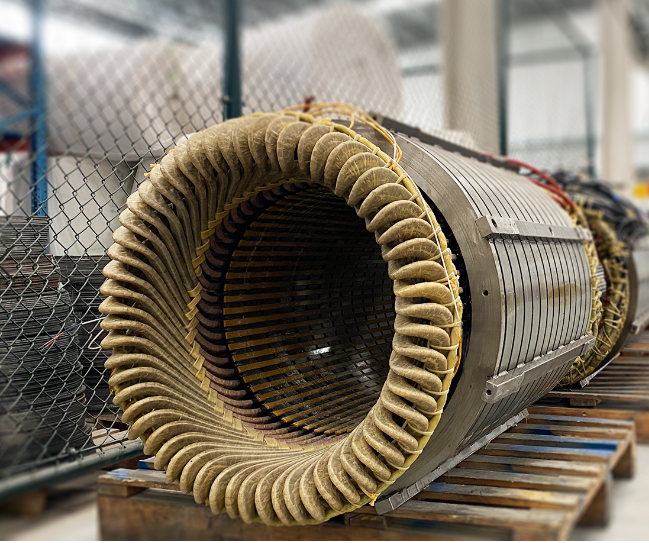Temperature rise is a very critical performance indicator of motor products. When the motor temperature rise is high, on the one hand, it affects the surrounding environment, and on the other hand, it is directly related to its efficiency level. The temperature rise of high-efficiency motors is very low, which is also one of the bases for motor users to initially determine whether the motor is efficient.
The factors that determine the motor temperature rise level mainly include the current density of the winding conductor, the conductor material, the heat dissipation medium of the motor body, and the surrounding environment of the motor.
In order to achieve a higher efficiency level, most motor manufacturers use copper conductors as winding materials, and control the conductor compliance of electromagnetic wires through necessary testing methods; in the product design, material procurement and application stages, as long as the consistency of the conductor and the design can be guaranteed, the heating level of the conductor itself is relatively fixed.
In the production and manufacturing stage of motor windings, insulation treatment is a particularly critical processing technology.How to ensure the temperature rise level of the product through the varnishing and curing process is crucial. Pre-baking, varnishing and heating curing during the insulation treatment process are the key to quality control for any motor manufacturer, that is, through the penetration and retention of insulating varnish, the winding is made into a solid whole to ensure that the heat energy generated during the operation of the motor is transmitted without obstacles.
In the matching relationship between the motor stator core and the base, necessary means should be used to ensure that the two are as close as possible and reduce and eliminate the air gap between them. The purpose is to ensure the coaxiality of the two on the one hand, and on the other hand, a very critical factor is to improve the heat dissipation conditions during the operation of the motor. For this reason, most motor manufacturers and repair units use VIP vacuum varnishing, rotary ovens and other equipment in the insulation treatment of the windings. For motors with different structures, the stator core is only partially in contact with the base, and the heat dissipation path includes other media such as air. The heat dissipation effect is poorer, and the necessary assistance or intervention can only be carried out through the air guide system.
The application environment of the motor also directly affects its heat dissipation level. If the ambient temperature is high, the temperature of the motor winding will be high at the same temperature rise level, which will directly affect its reliability. In plateau environments, due to the thin air, this important heat dissipation medium is insufficient, which will also cause the motor temperature to rise.Therefore, the reliability of the motor is not only related to the design level, but also closely related to the production process and application environment. How to fully understand and master the elements of the motor’s entire life cycle is a necessary factor for its reliable operation.
Post time: Sep-19-2024

